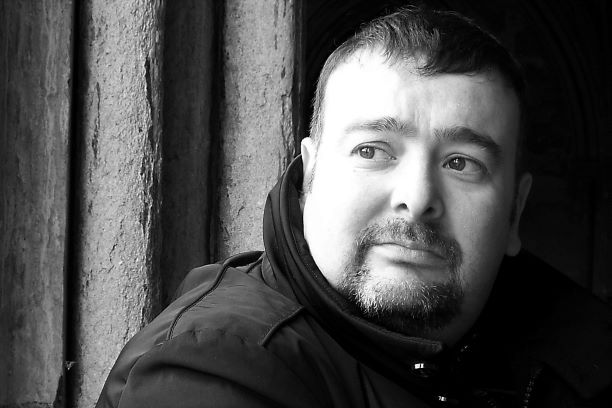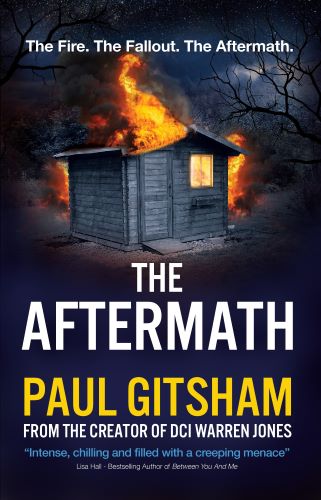Logging it right
Prologue and Epilogue.
One poster stridently announced that they always skipped the prologue, as it never contained anything useful.
I was gobsmacked.
In pretty much all of my books, the opening murder takes place in the prologue. Some would argue that’s fairly useful. Most other participants shared my view, but the original poster would not be moved in their opinion.
To this day, I can’t decide if the person was a troll, or just as mad as a box of frogs.
Some members of the group claimed they disliked books with a prologue, even to the point that they will avoid reading them.
“Just start at chapter one!” they implore.
Suggestions that if it really offends them that much, they could just mentally renumber the chapters so that the prologue is called chapter one, fell on deaf ears.
The thing is, in my DCI Warren Jones books at least, the prologue isn’t chapter one. My novels are, for the most part, set out in a linear fashion. I divide the story into sections, typically headed with a date. So for the initial murder to take place on an as yet undisclosed date, it needs to exist outside that structure. The prologue deliberately doesn’t have a date attached, so that if I wish, I can tease with an opening scene that may not be referenced again until well into the book. In my sixth book, A Price To Pay, the prologue has a woman running through a darkened forest being shot at and chased by dogs. The scene ends before we find out what happens to her.
The story then progresses to chapter one, where DCI Warren Jones is called to a murder in a massage parlour. As the book unfolds, readers will be wondering about that woman, looking for hints at what her fate is ,or the role that she will eventually play.
I’d suggest that skipping the prologue because of some irrational prejudice is going to seriously impact your understanding of what’s going on and rob you of that anticipation.
Lee Child, creator of the phenomenally successful Jack Reacher series, said at a literary festival that one of the reasons he made Reacher a drifter was to avoid the constraints of a traditional police procedural. Specifically he mentioned how a typical police procedural would start with the detective being called to the crime scene and the case unfolding from there.
It was a valid observation. Any police procedural that wishes to be realistic has an inherent structure. A Reacher novel can start from any point. In The Killing Floor, Reacher steps off a bus in a Georgia town, orders pie in a diner, and is promptly arrested. The Enemy opens with a heart attack, One Shot with a man carrying a rifle driving to a car park.
And that is the other reason why I always have a prologue. Each of my books starts differently. A Price To Pay has the woman in the woods. Forgive Me Father has two teenagers breaking into the grounds of a ruined abbey. The first in the series, The Last Straw, has the blood-soaked discovery of a body, the second, No Smoke Without Fire, starts with somebody released from prison.
Of course I strive to make chapter one original each time as well, but with one or two exceptions it usually starts after the discovery of a victim, when Warren is called to the scene.
But That’s Not The End.
One of the distinctive – and sometimes derided – features of Golden Age crime is the big final reveal. Agatha Christie’s Poirot novels are (in)famous for their closing ‘library scene’ (or similar), where all of the suspects are called together and Poirot goes through their motives one at a time, before discarding them. Eventually, whoever is left, is unmasked as the killer. It’s an effective and enjoyable device, not least because he ties up all the loose ends.
But of course it isn’t really appropriate or realistic for most stories. Gathering all the suspects together can feel contrived, and the tension of the reveal aside, isn’t especially dramatic. And attempting to wrap up everything in a neat bow can rob the final denouement of its momentum, as you seek to explain exactly what the final clue was that led to the killer.
But skipping that explanation isn’t a good idea. Your readers have earned the right to know exactly how the case was solved and perhaps even the motives behind the crime. Some readers like to ‘play along’, and will want to see if their thoughts mirrored the detectives. Simply having the killer presented, followed by The End, would be unsatisfying and frustrating.
So that’s where the epilogue comes in. The problem is that it can feel like an after thought. You need a way of getting across what you want to explain without it feeling like a list of bullet points. My own device is to have Warren debriefed by Assistant Chief Constable Naseem. He is openly collecting details of interesting cases for his future memoirs. It is usually a chat in his office a few days after the conclusion of the investigation. It has evolved over the years, with it becoming more philosophical in tone. I sometimes use it as way to foreshadow what may happen in future novels in the series (Out of Sight ends on a teaser about Warren’s future).
Most books have some sort of epilogue, but it may not be marked as such. It could just be the wrapping up at the end of the final chapter. I label mine epilogue simply because I like the symmetry of a book starting with a prologue and ending with an epilogue.
What are your thoughts on prologues and epilogues? Are they important to a book or a distraction? Do you use any particular devices?
As always, feel free to comment here or on social media.
All the best, Paul.
Epilogue:
Are you a writer with a tip to share? I love having guest bloggers. Feel free to contact me via the email or social media links.




















